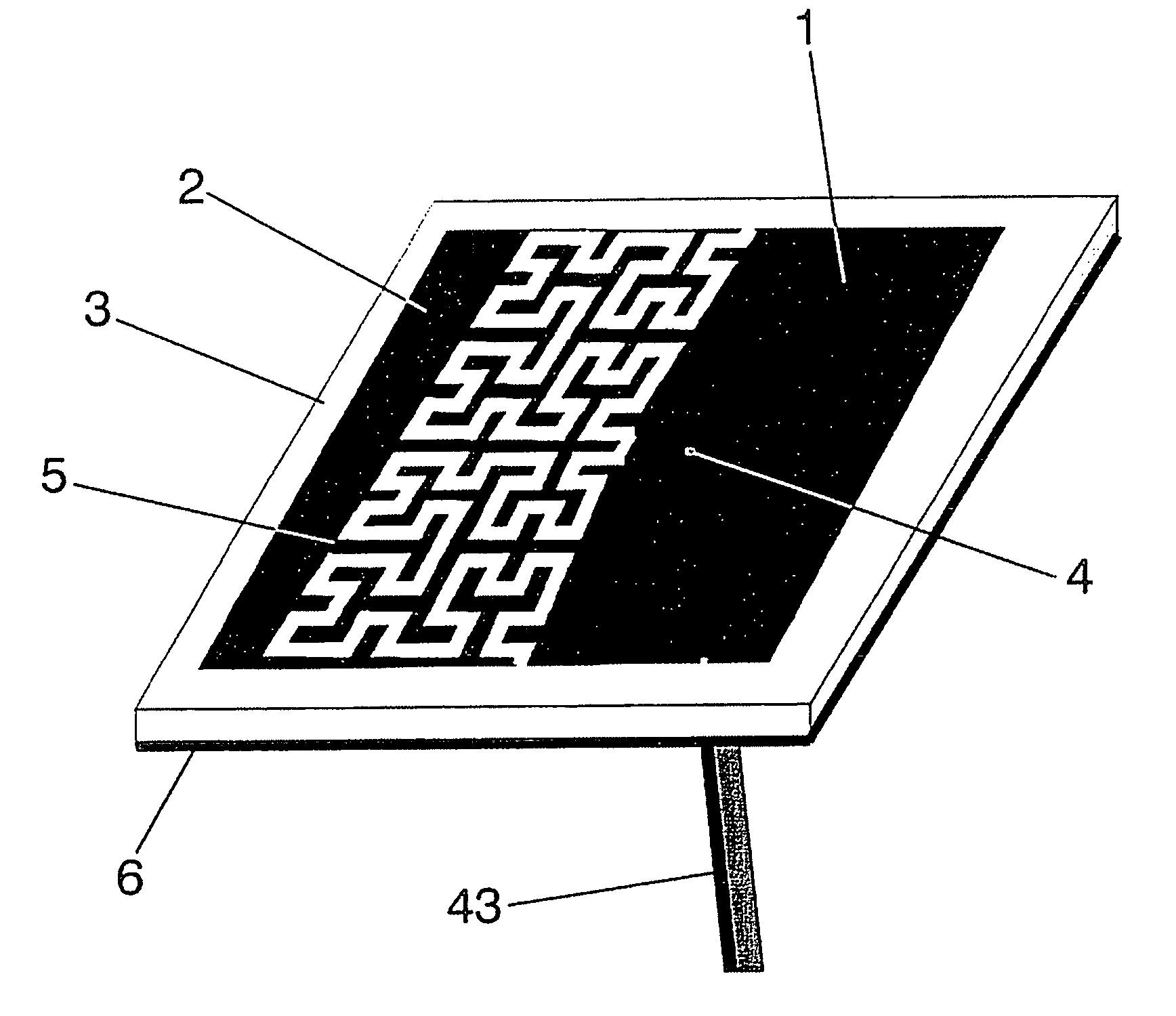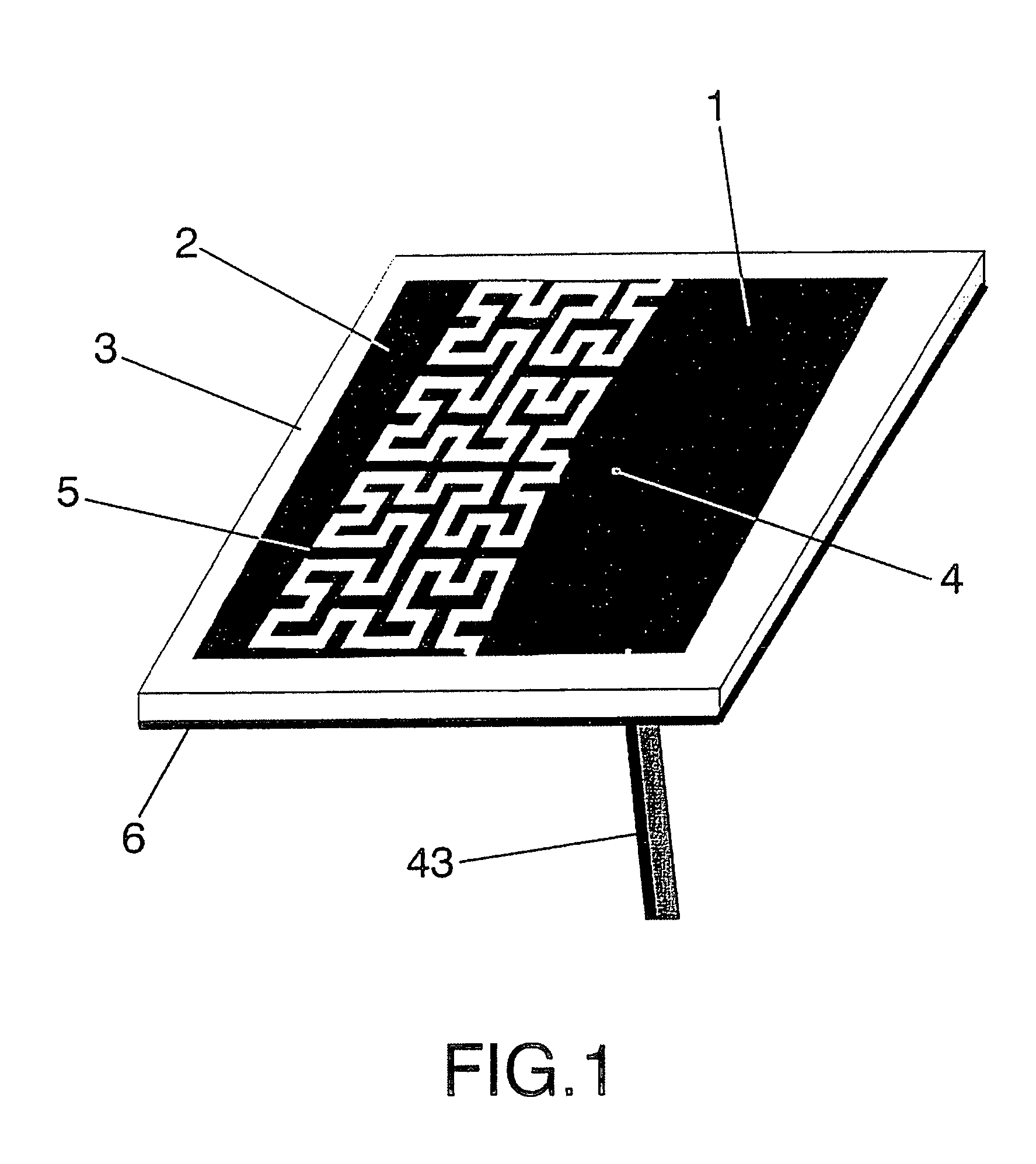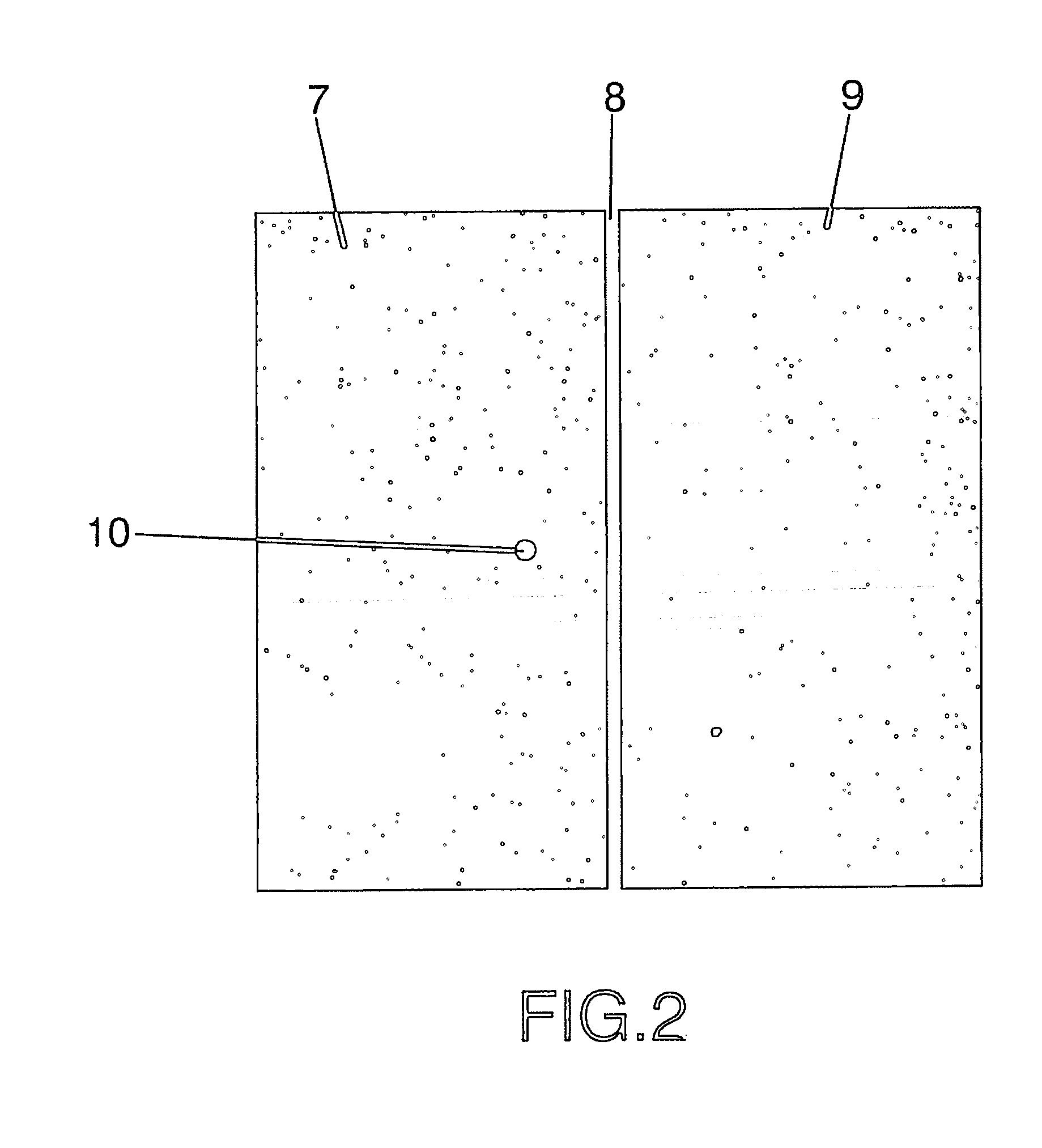Broadside high-directivity microstrip patch antennas
a microstrip and patch antenna technology, applied in the direction of simultaneous aerial operations, antenna details, antennas, etc., can solve the problems of low antenna efficiency, small patch size, and inability to hold the required distance, so as to improve directivity, directivity of a single antenna, and large bandwidth
- Summary
- Abstract
- Description
- Claims
- Application Information
AI Technical Summary
Benefits of technology
Problems solved by technology
Method used
Image
Examples
Embodiment Construction
[0033]FIG. 1 shows a preferred embodiment of the high-directivity antenna formed by a driven patch (1) and a parasitic patch (2) placed on the same substrate (3) above a groundplane (6). The said driven patch (1) and parasitic patch (2) can be printed over a dielectric substrate (3) or can be conformed through a laser process. Any of the well-known printed circuit fabrication techniques can be applied to pattern patch surface over the dielectric substrate (3). Said dielectric substrate (3) can be for instance a glass-fibre board, a teflon based substrate (such as Cuclad®) or other standard radiofrequency and microwave substrates (as for instance Rogers 4003® or Kapton®).
[0034] The dielectric substrate (3) can even be a portion of a window glass of a motor vehicle if the antenna is to be mounted in a motor vehicle such as a car, a train or an airplane, to transmit or receive radio, TV, cellular telephone (GSM 900, GSM 1800, UMTS) or other communication services of electromagnetic wa...
PUM
 Login to View More
Login to View More Abstract
Description
Claims
Application Information
 Login to View More
Login to View More - R&D
- Intellectual Property
- Life Sciences
- Materials
- Tech Scout
- Unparalleled Data Quality
- Higher Quality Content
- 60% Fewer Hallucinations
Browse by: Latest US Patents, China's latest patents, Technical Efficacy Thesaurus, Application Domain, Technology Topic, Popular Technical Reports.
© 2025 PatSnap. All rights reserved.Legal|Privacy policy|Modern Slavery Act Transparency Statement|Sitemap|About US| Contact US: help@patsnap.com



